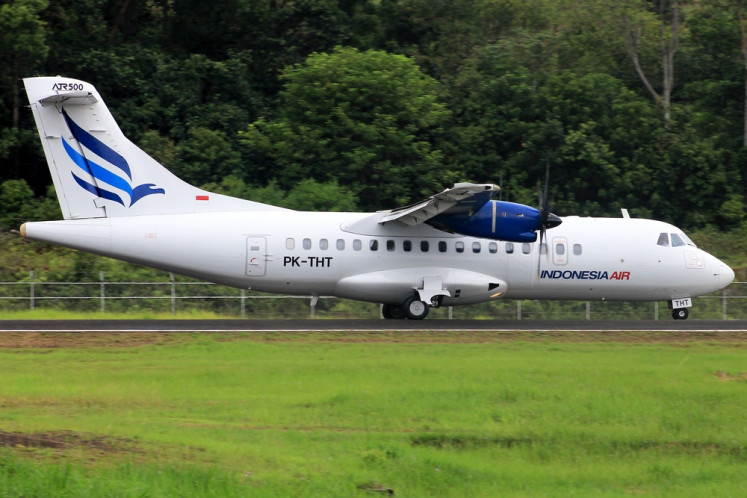Popular Reads
Top Results
Can't find what you're looking for?
View all search resultsPopular Reads
Top Results
Can't find what you're looking for?
View all search resultsKarimunjawa part of an ancient trade route: Archeological find
JP/Suherdjoko An underwater archeological team from the Yogyakarta Archeological Center has discovered ancient earthenware believed to date back to the 13th century Ming Dynasty in China, scattered on the sea bed northeast of Genting Island, in the Karimunjawa Island chain off Jepara regency, Central Java
Change text size
Gift Premium Articles
to Anyone
JP/Suherdjoko
An underwater archeological team from the Yogyakarta Archeological Center has discovered ancient earthenware believed to date back to the 13th century Ming Dynasty in China, scattered on the sea bed northeast of Genting Island, in the Karimunjawa Island chain off Jepara regency, Central Java.
Team leader Priyatno Hadi Sulistyarto, said in Karimunjawa on Friday, that the finding indicated the area was an ancient trade route.
The underwater archeological exploration is the first of its kind in Indonesia.
“The ceramic fragments we found depicted white and blue motifs of flowers and animals. The earthenware items were mass-produced. Besides that, the bottom of the bowls and plates is rough and embedded with sand. All of them showed special traits usually found on earthenware from the Ming dynasty,” said Priyatno.
The 16-member research team from the Yogyakarta Archeological Center is made up of Priyatno Hadi Sulistyarto, Siswanto (Yogyakarta Archeological Center head), T. M. Hari Lelono, Sugeng Riyanto, Sofwan Noerwidi, Heri Priswanto (archeologists), Z. Dekon Suyanto (archeological artifact expert), Tedy Setyadi (mapping expert), Bakrun (artifact handling expert) and Slamet Widodo (equipment
supervisor).
Three other archeologists, Riris Purbasari, Muhamad Junawan and Denny Wahyu Hidayat, are
from the Central Java Ancient Remains Preservation Center (BP3) and two students, Adyanti Putri Ariadi and Camella Sukma Dara, are from the archeological department of the Cultural Science
Faculty at Gadjah Mada University in Yogyakarta.
There are also certified divers from the diving team led by Taufik Rahman Arif Busiman, a dive master from the Indonesian Diving Sports Association.
The ancient pottery items were located between 2 and 2.5 meters deep on the sea floor and some 200 meters from the coast.
The ceramic fragments were scattered within a radius of between 30 and 40 meters.
A resident on Genting Island, Suminto, 28, said islanders had been aware of the ceramic objects for a long time.
“Someone has found intact bowls and ceramics before. For us that wasn’t interesting, especially after only fragments, which we call kereweng, were remaining,” said Suminto who frequently joined the archeological team.
The underwater archeological team had been searching for a shipwreck initially at a depth of between 30 and 50 meters around Genting Island, but due to the southeasterly winds triggering 2-meter high tides, they had trouble locating the shipwreck.
They conducted three dives, but failed to locate the wreckage.
“Besides swift undercurrents at 10 meters deep, the condition was very dark at depths of more than 30 meters. I brought a flashlight, but couldn’t see anything, so I decided to resurface,” said Priyanto.
The decision to dive at that point, said Priyanto, was based on accounts from local fishermen who said they had found items, like clay pitchers, ceramic bowls and a headless Buddha statue.
Karyadi, 47, for instance said he found a water jug by accident when he was fishing with a net in 1998.










